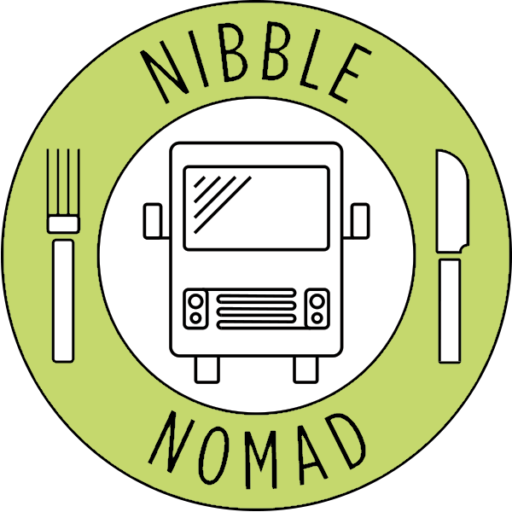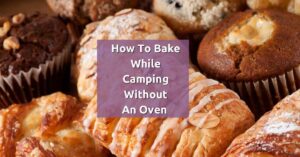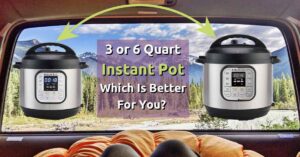Cooking and camping in different altitudes can significantly affect the way your food recipes come out.
When camping in different areas, it’s really helpful to know what the elevation is where you will be cooking for the night.
We live at an elevation of 5150, so we had to learn to adapt all of our ways of cooking and baking to accommodate the altitude.
Understanding Altitude
Altitude and elevation are the same thing. As elevation increases, atmospheric pressure decreases.
Atmospheric pressure is also known as air pressure or barometric pressure. It is the force used by the weight of the air above the earth’s surface.
This changes according to the altitude, the weather, and the location. Knowing your altitude/elevation when camping is crucial in being able to complete a tasty meal without making a mess.
Low elevation/pressure is usually associated with areas where the air is rising. That would be where the weather can become unsettled. These are generally closer to the east coast.
An example of this would be a place where thunderstorms or tornados occur. Lower air pressure means a storm. Whenever there is going to be a storm, you are in a low-pressure system.
Low pressure usually leads to a decrease in temperature. This is generally because of the clouds and precipitation are blocking the sun.
High elevation/pressure is usually associated with areas where the air is sinking. This type of pressure tends to bring warmer and drier conditions, which reduces the likelihood of the formation of clouds and precipitation. You have thinner air in higher elevations.
The high-pressure systems generally include clear skies, light winds, and practically no precipitation. Most of the high-pressure systems are located on the west coast.

| Disclosure: Please note this post may contain affiliate links. There is no additional cost to you – we earn a commission if you purchase using our links. We only link to products and companies we use and recommend.
How does this affect cooking and camping at different altitudes?
The best way to understand how changing altitudes can affect cooking and baking, whether at home or when you are out on your next camping trip, is to understand pressure.
As you increase altitude, the pressure decreases, which has many different effects on cooking and baking.
Let’s start with boiling water. Water boils at a lower temperature at a higher altitude because the lower pressure lowers the boiling point.
When it comes to cooking in boiling water, the lower boiling point of water will make the food take longer to cook. Because of this, you might need to adjust your hours of cooking time.
How about baking? When you start thinking about baking, you need to make sure you realize how it affects ingredients. The lower pressure will make your baking powder and baking soda (leavening agents) become more active. This can make your baking item bake too fast, so the amount of these leavening ingredients must be adjusted.
At a higher altitude, the air is typically drier. This can lead to faster evaporation and drying of foods. When you are baking, you need to remember this and possibly add more moisture to make your recipe come out to be a great meal.
Temperature can be more extreme at higher altitudes. This can become problematic regarding rising times in baking with yeast-based recipes.
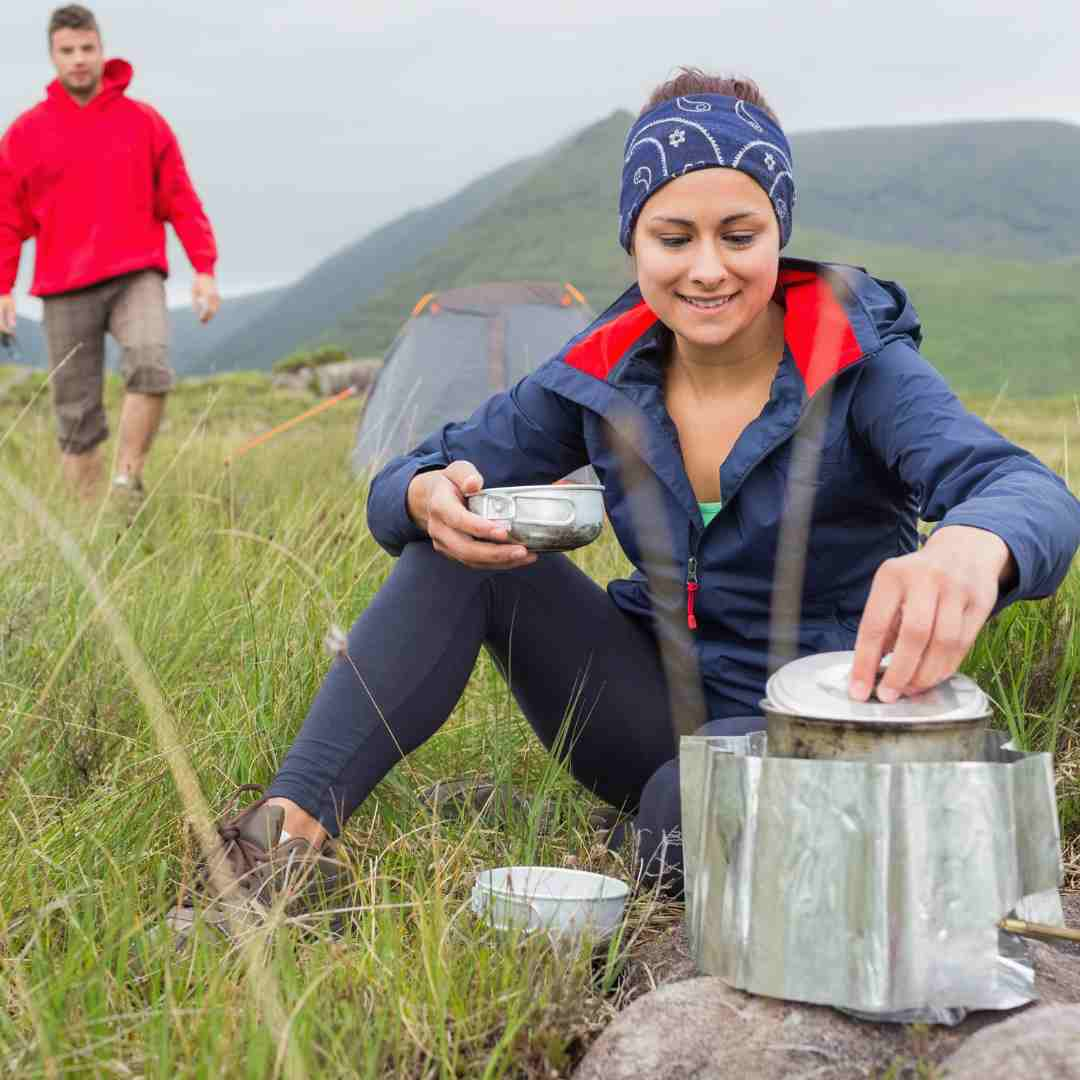
How to adjust for cooking and camping at different altitudes
Adjusting for baking and cooking at different altitudes is essential to making successful meals.
The important adjustments to remember are temperature, leavening agents (baking soda and powder), cooking times, and the amount of fluids you use.
The first thing you need to do to calculate is to find out your altitude in the location where you live or where you are camping.
You can find your altitude with online tools, apps, or a weather station. The app we use the most with our Apple phones is Current Altitude. It’s a quick way to see what altitude you are at when you arrive at your campsite.
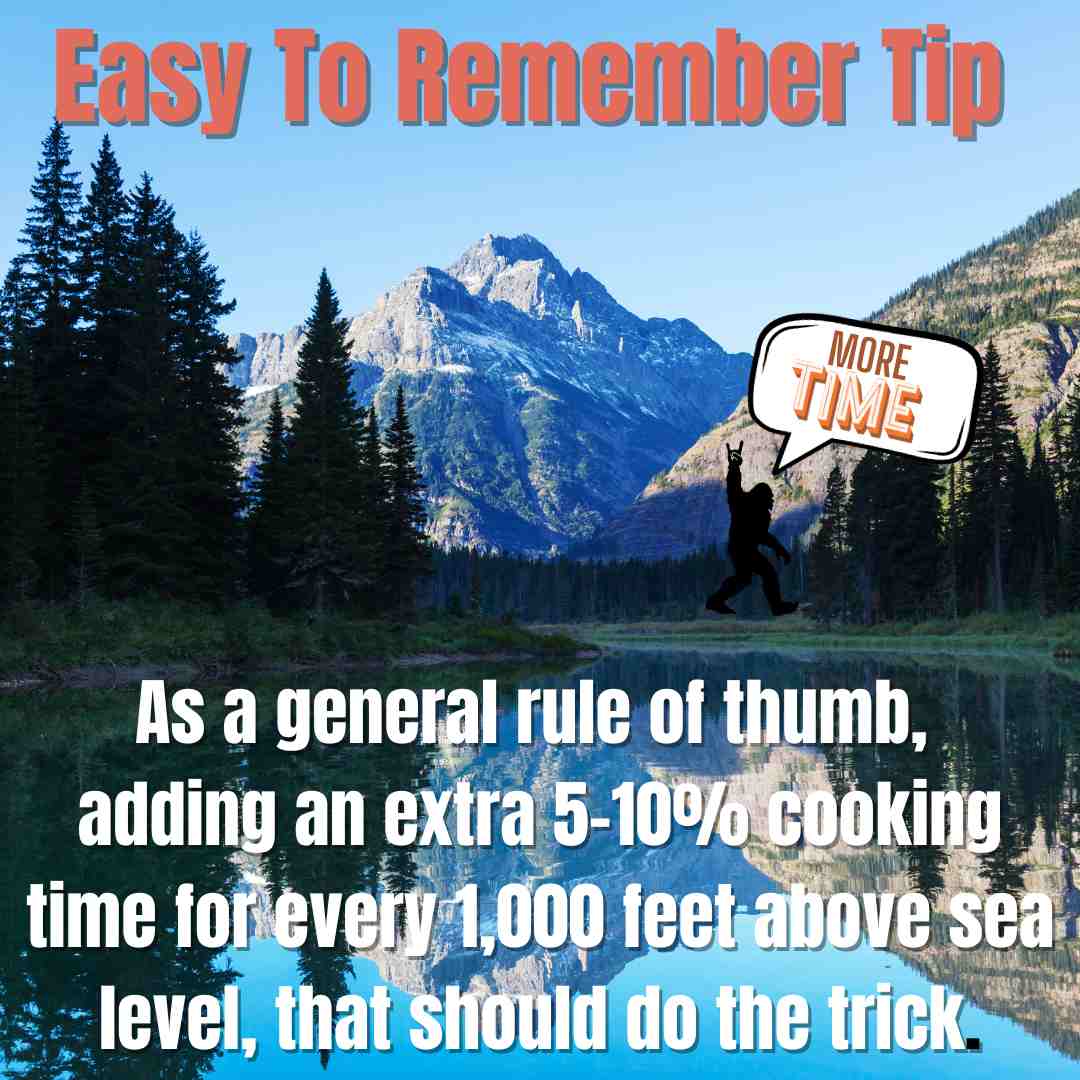
When baking at higher altitudes, you need to increase your oven temperature by 15-25°F (8-14°C). This is because the boiling point of water is lower. This will make sure you have the proper browning of your food.
Make sure you also reduce the amount of baking powder, and baking soda by about 15-20% for every 3,000 feet (900 meters) above sea level. An example would be if the recipe asks for 2 teaspoons of baking powder. How much would you need at 5,000 feet (1500 meters)p? The answer is to reduce by 1 teaspoon.
When it comes to cooking times, start with a 5-10% increase and adjust as needed.
Remember always to document your adjustments and the results each time you cook or bake. Don’t be afraid to experiment. Check on the food cooking or baking more frequently to make sure you get the result you are looking for.
Here are some tips for altitude cooking and baking
Yes, it might seem overwhelming at times when having to think about the elevations while cooking, but there are simple solutions.
Cooking times – For recipes that include boiling water, remember that water boils at a lower temperature if you are at a higher altitude/elevation. So, it would be best if you increased the standard cooking times.
Leavening agents – When you are baking from scratch at higher elevations, you need to reduce the amounts of baking powder and baking soda. This will reduce the food from over-expansion.
Add moisture – The dry air at a higher elevation can make your baked goods dry. Remember to add more liquid to your recipes, especially baked goods.
Adjust the temperature – When you are at a higher altitude/elevation, you may need to increase the oven to a higher cooking temperature slightly. Baked goods take longer to set and brown at higher elevations. Always check your food as you bake or cook it more frequently to ensure proper doneness.
Experiment and adapt – Because things change with different elevations, it’s always best to do some trial and error to perfect your recipes. I like to keep notes when testing recipes.
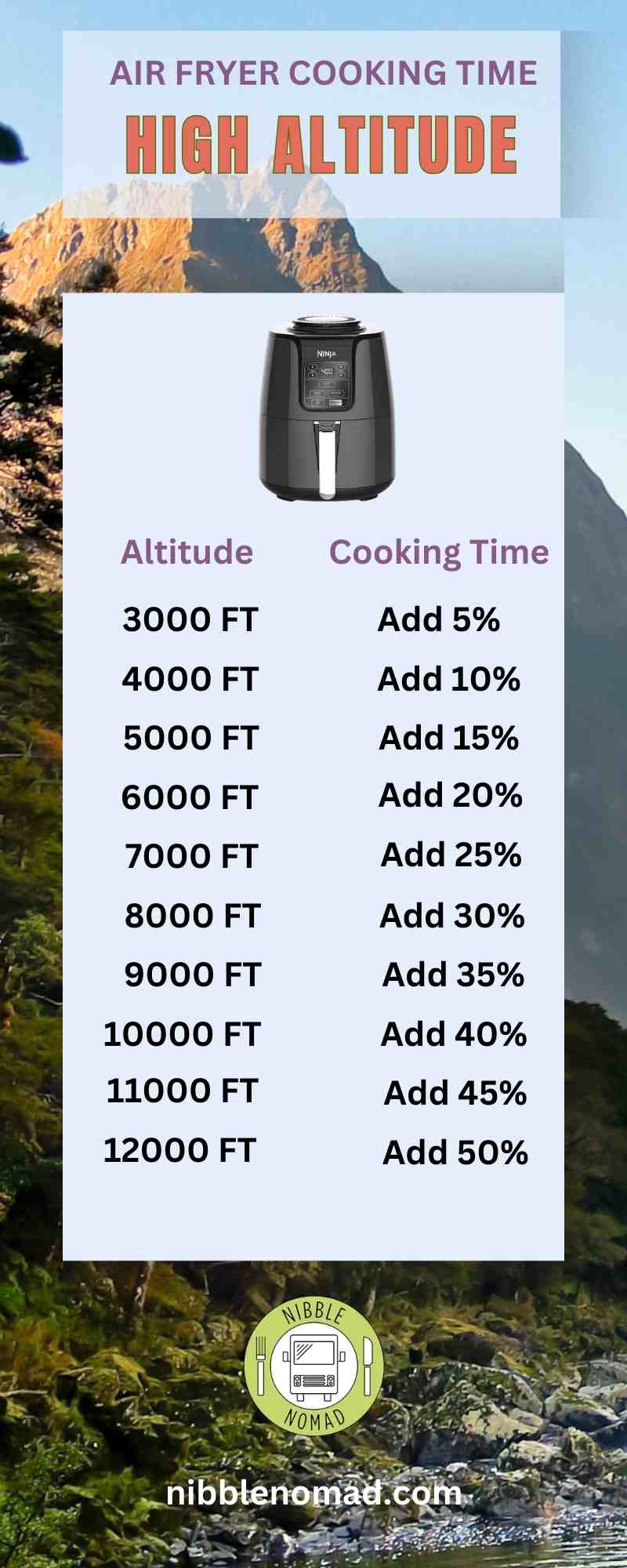
Finally
Altitude/elevation definitely makes a difference in your meal plan in all baking and cooking. A pressure cooker or crock pot can be helpful at higher elevations because they maintain a consistent, low temperature over a longer period of time.
Higher altitude cooking can also affect your air fryer cooking and baking, so check out the easy guide below for quick cooking time adjustments.
Instant Pot has come out with a unit that has settings for different altitudes to make your cooking experience easier.
Keep in mind that prepackaged goods bake differently in higher elevations. It’s a good idea to follow the directions very carefully. Some manufacturers are now starting to put instructions for different elevations right on their packaging.
The general rule of thumb is to research your altitude/elevation before you start cooking or baking to make sure you know which way to make your adjustments.
Just remember that if it doesn’t come out perfect every time, it doesn’t matter because you are still enjoying the great outdoors.
Nibbler Tip: Covering your foods while cooking helps trap steam and heat, which can help in cooking and preventing moisture loss.
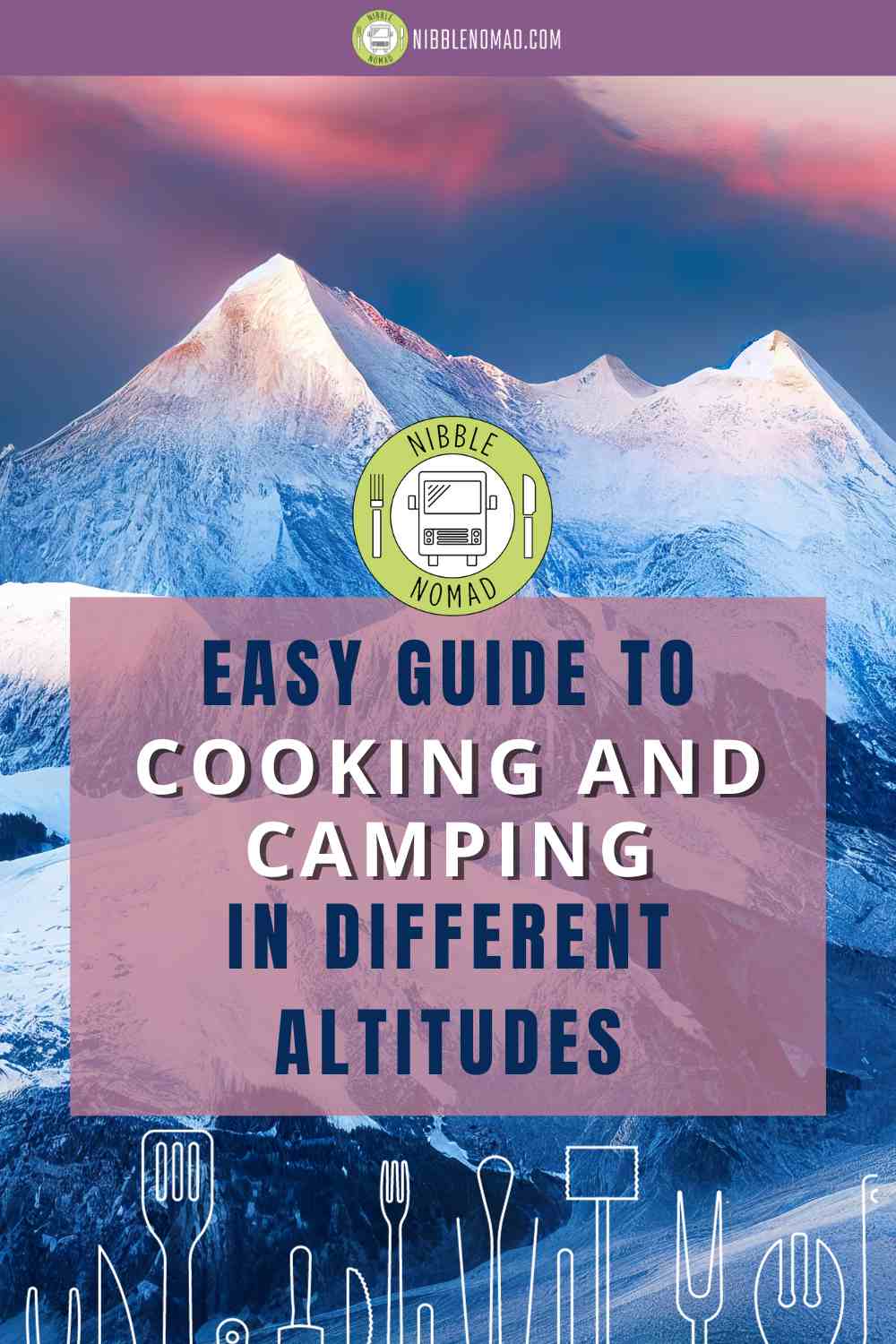
Related Post
AMAZON DISCLOSURE: This website participates in the Amazon Services LLC Associates Program, an affiliate advertising program designed to provide a means for us to earn fees by linking to Amazon.com and affiliated sites.
